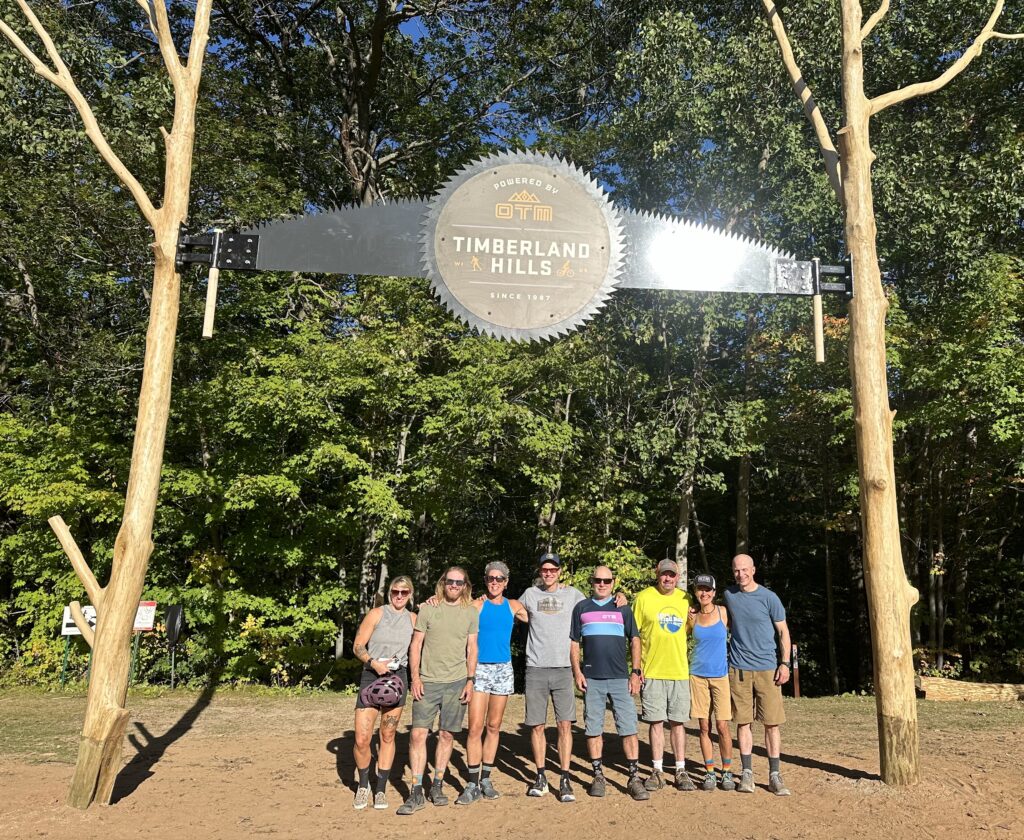In our last OTM blog we looked at cardiovascular training for your winter program. Next up we’ll be considering a strength program to help build power and muscular balance to take your riding to the next level this year.
Frequency and Duration
I suggest getting into the gym two or three times a week, if possible. The frequency can be dependent somewhat on what areas you need to work or even weather conditions that keep you inside more than out on your bike. If you have any nagging pains and injuries or just some general weakness, right now is absolutely the time to work on them. Giving up some saddle time now to get into a good “pre-hab” and strength routine is well worth it. As you start to see improvements in weak areas and spring is within reach, you’ll start to swap out gym time for saddle time. When you’re putting in work in the gym, go as hard as feels reasonable, but not for any longer than an hour. Remember this work is to complement your riding, not take the place of it or make you look like Arnold back in the day.
Strength Movements and Goals
The earlier you start your strength program, the more time you’ll give yourself to build a base for next season. So, now is the time! Start with working on smaller muscle groups in the pelvis, mid/upper back, core, neck, and shoulders. Too often athletes move right to the larger muscle groups and movements. Examples of this are bench press, squats, deadlifts etc. The issue with rushing into those movements too soon are the smaller underlying muscle groups can easily get overpowered by the larger ones. This can lead to injuries or further enhance already existing imbalances. Instead begin with small movements that isolate the previously mentioned area and build strength and balance there first. Then progress into the larger groups to build power and strength. If you have had some more serious injuries and pains I would go one step further and visit with a good sports physical therapist or the like.
I like to have athletes start at lower weights and focus on good form no matter what the movement. Doing this sets the tone to perform movements with good form and purpose as the weight and intensity increases. Starting with two to three sets of twelve to fifteen reps is a good starting point that builds a solid base of muscular endurance.This also mirrors well the cardio/endurance training that we went over in the previous blog. After eight to twelve weeks, a good foundation of strength and balance should be established. At that point, it’s ok to start to add more weight on your bigger muscle group movements with three to five sets of five to six reps. This will begin to work on strength gains over muscular endurance, which will pay dividends later in the year for adding power to your sprints and staying strong through technical sections.
In addition to general strength movements, I suggest looking at your general agility and mobility. Consider flexibility in your lower back, hamstrings, and ankles. All of which are key for bike control and comfort. Using plyometrics such as box jumps, ladders, unstable surfaces, etc. can all add to your flexibility and your general athleticism.
Below are a few of my favorite movements. I may use different names for one or two exercises than what you’re used to, but don’t hesitate to reach out if you have questions. I also like to use Train Heroic to track gains and record overall sessions with athletes. It’s a great tool to help measure your progress. Finally, make sure to consult with a well-trained professional to make sure you are using good form. The payoff of professional guidance is twofold: It prevents injury and makes the most of your hard work!
- Planks- Front
- Planks- Sides Right
- Planks- Sides left
- Bridge
- Deep Squats/3rd World Squat
- Single Leg Squats
- Single Leg Dead Lift
- Supermans
- Lateral Raises- Front
- Lateral Raises- Sides- both
- Internal Rotation
- External Rotation
- Clamshells
- Heal Taps
- Foot Slides
- Straight Leg Lift
- Physio Ball Wall Rolls
- Pulls Downs w/ Thera bands
- Bird Dogs
- Wipers
- Goblet Squat
- Step Ups
- Bench
- Squats
- Dead Lift
- Bent Over Row w/ Heavy Bar
- Wall Ball with Single Leg Lunge
- Around the World
- Suitcase Lift
- Pushup with Ball Roll
- Pushup with Dumbbell Pull
- Russian Twists/ Core Rotations
- Deadlift with Plate/Ball
- Curl to Press w Ball
- TRX Push Ups
- TRX Mtn Climbers
- TRX Rows-
- Pull Ups
- Chin Ups
- Mixed Grip Pull ups
- Battle Ropes
- Walking Lunges- Forward
- Walking Lunges- Rearward
- Plate Flips
- Hanging Knees to Chest
- Hanging Knees to Chest w Rotations
- KettleBell Rows- Single Arm
- Swings
- Banded Rotations
About the author:
Colin Izzard is a full-time strength and conditioning coach with CTS working with all levels of athletes that seek improvement and are willing to do the work! He can be contacted at cizzard@trainright.com if you have thoughts or questions.
He lives, works and rides in Brevard NC near the Pisgah National Forest.
For a full bio please follow this link: trainright.com/coaches/colin-izzard/


